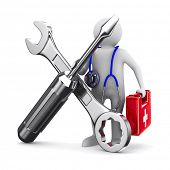Safe driving tips – Driving your car safely involves best road manners, safety precautions and defensive driving. Defensive driving is anticipating situations or factors that can possibly lead to accidents, and manage your driving in a way, that enables you to stay out of accident-prone situations.
Best safe driving tips for new and teenage drivers !
Safe driving has to be practiced and is not a matter of luck that accidents are avoided. Show care, courtesy, and consideration for other road users.
Have a complete knowledge of traffic rules and regulations. Be alert for illegal moves and errors on the part of other road users whilst driving. Show concern for accident prevention and always expect the unexpected. Give right of way, do not claim it. Observe lane discipline.
When being overtaken, do not increase your speed or try to prevent the other vehicle from overtaking you. While riding in a car, lock the doors from inside and do not lean against them when the car is in motion. They may open and throw the passenger out.
Do not disturb a new driver or ask questions, especially in heavy traffic, in unfamiliar areas, and when the truck driver is in a hurry. Do not drive after drinking alcoholic beverages, even if it is only beer. Alcohol impairs one’s driving abilities. Do not smoke while driving at night since the nicotine and carbon monoxide in cigarette smoke can hamper night vision.
More safe driving tips for teenagers and new car drivers
For every 16 km per hour, the braking distance required is one car length. It doubles during the night, in bad weather, and on a down gradient. In snowy conditions, one needs an even longer distance to stop.
Turn the headlight on even at twilight. This helps other drivers to see you more easily which is also very important in avoiding accidents.
At night, drive only at a speed that enables you to stop in the distance visible in your headlights, and keep a greater distance between your vehicle and the one ahead of you.
Be careful about other teenage car drivers who might be new and driving erratically or at high speeds due to fatigue or under the influence of alcohol.
Keep sufficient distance around your vehicle to take a defensive measure should the need arise. For this, keep a constant watch on the traffic behind and around you by looking frequently in the rear-view and side mirrors.
If you see the police chasing a car, get out of the way and pull up at the earliest. Major accidents can occur during a high speed chase involving new and teenage drivers. Give way to all emergency vehicles, such as ambulance and fire-brigades.
Be extra careful on an undivided two-way road especially on turns. Don’t use the high beam when there are other vehicles, cyclists, or pedestrians on the road. Your high beam may temporarily blind them.
When passing a road repair zone or a procession, slow down. If you are tired, let another person drive. If no other driver is with you then take a rest, eat a light snack, and, if possible, wash your face and eyes before resuming driving. If none of this is possible, take a taxi.
While driving, keep anger from building up due to traffic or red traffic lights over which you have little control. If a problem in the car forces you to stop, pull off the road, turn the emergency lights on and warn the oncoming traffic with a white cloth or flares.
Police, children and pedestrians and pets!
Wait for a police vehicle to come by. If you are working on the car, be careful of the approaching traffic. If you spot someone in trouble on the road, report it to the police. They are better trained to help and can call for additional assistance as necessary.
Of course, there may be instances involving human life where you may yourself have to help out because time is important. In that case, try to get several people to help and someone should also contact the police or hospital right away. Take care to notice any movement of pets, especially when you start and stop your car by looking at mirrors and outside the windows.
Your car should be checked for winter worthiness and for icy road conditions if these are likely to exist in your driving region.
A small child should always be carried in a safety seat placed in the middle of the rear car seat and securely fastened. He is not safe in your lap. In an accident he could be thrown against the dashboard or your own body could crush him.
On slippery roads, pedestrians and cyclists may slip and fall; therefore, be cautious in your driving and give them extra space. Give old people some more time to react.
RELATED TOPICS
How to take care of your teeth and gums
Best hospitals in North Carolina
Top 10 medical tourism destinations
